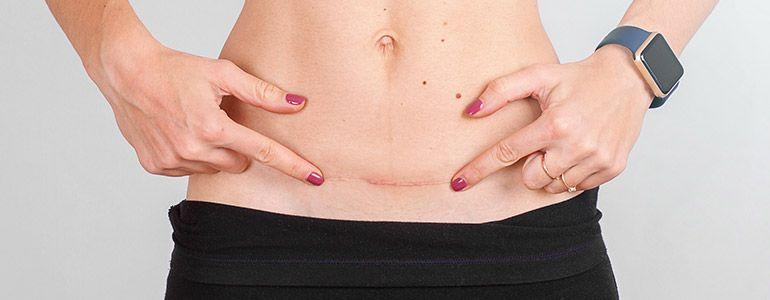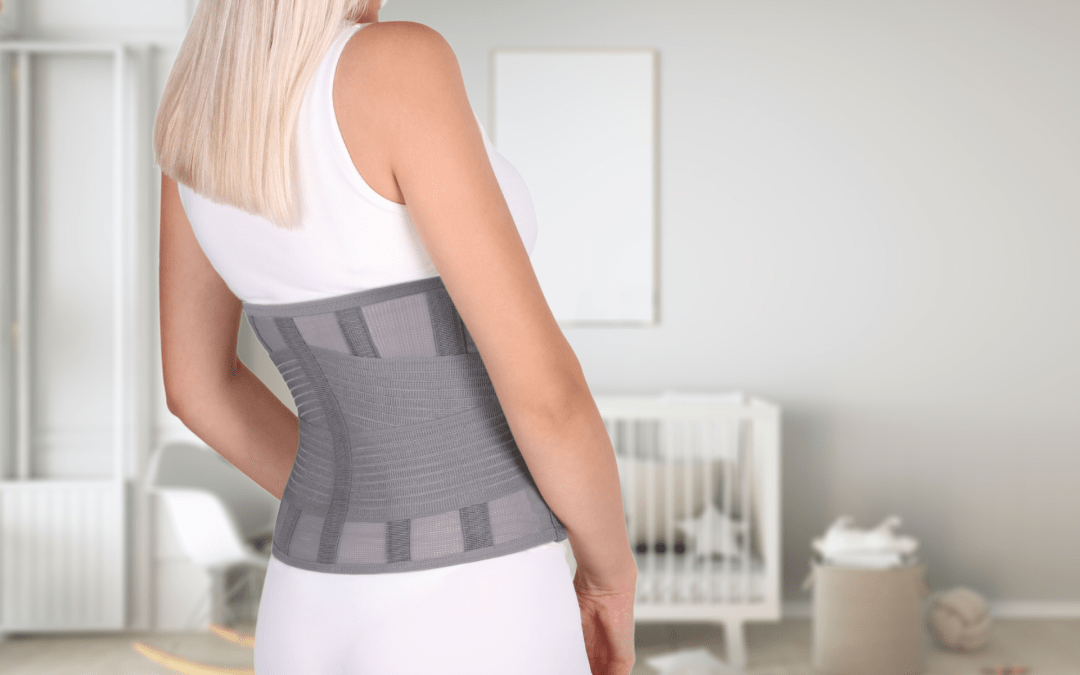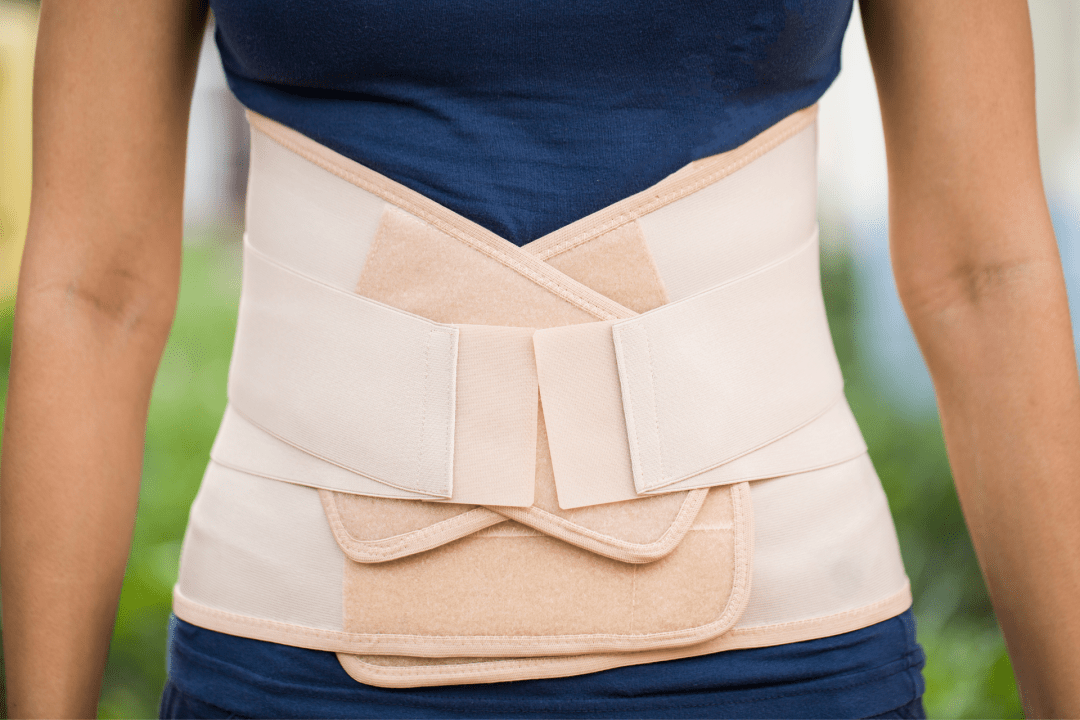What is a c-section?
A c-section is a surgical procedure where the baby is delivered by cutting through the abdomen and uterus. It's also called cesarean delivery or cesarean section (CS).
What are the types of c-sections?
There are four different ways to perform a c-section: low vertical, low horizontal, classical (modified), and high transverse incision. The type depends on various factors like the size of the mother's uterus, fetal position, prior surgeries at the maternal abdominal wall, or previous uterine scars.
Low vertical means that the cut begins about 1 ½ inch above your pubic hairline and extends down towards your belly button. Low horizontal means it starts above your pubic bone and goes across just above the pubic hairline.
Is c-section the same as cesarean?
No, cesarean means to cut the baby out. C-section means that there is a surgical cut to deliver the baby. Repeat: Cesarean does not mean c-section; it's an adjective for this procedure (e.g., "She had a cesarean birth").
Why might you need an emergency c-section?
If your water breaks before you go into labor or very early in your pregnancy if you have severe preeclampsia (a condition marked by high blood pressure and possible damage to organs) or HELLP syndrome (more severe than preeclampsia), if you're carrying multiples, if your baby is in an abnormal position like breech (buttocks or feet first), or if the umbilical cord is around the baby's neck, you might need an emergency c-section.
What are some risks of a c-section?
Some risks of c-section include infection, excessive bleeding, blood clots, injury to the baby, and death. You're also at risk for developing problems with your bladder or bowels after surgery.

What are the benefits of C-sections?
The c-section is a life-saving surgery for both mother and child in some situations, so it shouldn't be considered as an easy way out of labor or natural birth.
It can benefit certain people including those who have had previous uterine surgery, first-time mothers with high blood pressure problems, obese women, diabetic women with poor control of their disease, multiple pregnancies (twins or more), babies that are too big to pass through the birth canal easily, failure to progress in labor after other measures have been taken, etc.
There are also some risk factors involved like low transverse incision which has poorer outcomes than classical incision where scarring of the uterus or bladder can occur.
What is the abdominal belt for after a c-section?
A surgical incision in your abdomen (belly) will result in pain and discomfort, it also leaves an open wound that takes weeks to heal. During the time when you have this open wound, there is a possibility of injury due to movement accidents like coughing too hard, sudden pressure on the stomach while getting up from bed, etc.
For protecting that open wound many surgeons use a special type of dressing called 'drain' or sealant over that incision during surgery which needs to be removed in 2-3 days post-delivery. This special dressing reduces infection risk in the post-operative period and helps speed up recovery time by reducing swelling in the belly.
After the c-section incision is sewn up with special dissoluble stitches. As the stitching dissolves, it will speed up your recovery time too.
If you had a classical (vertical) cut then you will need an abdominal belt after a c-section to reduce swelling and aid in the healing process. It can also help you protect that wound during this period.
Your doctor will remove the dressing on the surgical site within 2-3 days of your caesarian delivery and fit an abdominal binder around your abdomen (belly) which won't allow the contents of your stomach to bulge out or cause injury to the newly formed scar tissue while bending forward or getting up from bed etc. This type of compression helps decrease pain, swelling, bleeding and also speeds up the healing process.
Types of abdominal belt
There are mainly two types of abdominal belts available in the market- elastic and non-elastic.
Non-elastic abdominal belts need to be tied around your waist and provide good compression. They are usually made up of cloth or some other type of stiff material and work well for moderate activity levels.
Elastic abdominal belts are stretchable and fit snugly around your waist. They come with a Velcro closure which makes them easy to wear and take off. These types of belts are good for people who have higher activity levels like working out etc. as they offer more support.

Most women can start wearing an elastic belt immediately after surgery but if you're experiencing a lot of pain, your doctor may ask you to wait until the pain decreases.
Some general tips for wearing an abdominal belt:
- Wear the belt around your waist and make sure it's not too tight or too loose
- Make sure the belt is not pressing on your incision site
- Take breaks from wearing the belt often so that your skin can breathe
- Drink plenty of fluids and eat healthy to aid in the healing process.
How to use an abdominal binder?
An Abdominal binder can be used during pregnancy too if you are having a high-risk pregnancy or suffer from pelvic girdle pain (pain during walking, lifting, etc.) or diastasis recti (separation of abdominal muscles), etc. Some women wear these for just 4-6 weeks after delivery while others prefer using it all through their pregnancy for relief from backache and pelvic pain.
It should be worn only under the supervision of your doctor. It's not suitable for women with certain conditions like hernia, appendix problems, etc., so consult your doctor before wearing this compression garment. The right size needs to be chosen which is usually 1-2 sizes smaller than your pre-pregnancy clothing size.
Wrapping an abdominal belt around your waist tightly after a c-section is not recommended as it could cause pain, constriction, and other problems. It's important to wear the belt as instructed by your doctor and loosen it if you experience any discomfort.
If you have had a cesarean delivery, you will need to wear an abdominal binder to support your stomach and speed up the healing process. An abdominal belt can be used during pregnancy too if you are having a high-risk pregnancy or suffer from pelvic girdle pain (pain during walking, lifting, etc.) or diastasis recti (separation of abdominal muscles), etc. Some women wear these for just 4-6 weeks after delivery while others prefer using it all through their pregnancy for relief from backache and pelvic pain.
Is it safe?
There are no reports of any harmful effects on the mother or baby as long as it's used under medical supervision and the right size is chosen. The skin over your anesthetic site should be checked frequently for any irritation or redness happening due to this abdomen binder.
During pregnancy, you can use an abdominal belt for relief from pelvic pain and backache but it shouldn't be worn all day and night. It should be removed whenever you sleep and put on again when you get up. If you feel that binder is bothering you then remove it immediately and ask your doctor about proper usage instructions before trying it again.
An expectant mother can wear the abdominal binder during pregnancy only under strict instructions from her obstetrician/gynecologist. It is usually prescribed for women having high-risk pregnancies, those suffering from pelvic pain and/or backache, and women who have suffered a separation of the abdominal muscles (diastasis recti).
The belt is usually worn for 4 to 6 weeks after delivery, but some women may choose to wear it throughout their pregnancy for additional relief. It should be worn only under the supervision of a doctor and should not be used if the mother has any other medical conditions, such as a hernia or an appendix problem.
The belt should also not be wrapped tightly around the waist; it should be worn comfortably so that it can provide the desired compression without causing pain or other problems.

When is it late to wear?
There are no reports of any harmful effects on the mother or baby as long as it's used under medical supervision and the right size is chosen. The skin over your anesthetic site should be checked frequently for any irritation or redness happening due to this abdomen binder.
It is never too late to wear an abdominal belt after a c-section, but it should always be worn under the supervision of a doctor. It is important to choose the right size belt, and the belt should be loosened if any discomfort is experienced. The pregnant woman should drink plenty of fluids and eat a healthy diet to help with the healing process. There are no known harmful effects to the mother or baby as long as the belt is worn correctly and under medical supervision.
Other recommendations after c-section for faster healing process:
- drink plenty of fluids
- eat a healthy diet
- get plenty of rest
- walk and move around as much as possible
- do not lift anything heavier than your baby for 6 weeks post-c-section.
Conclusion
An abdominal belt can be a helpful tool in the healing process after a c-section, but it is important to follow the instructions of a doctor closely. Some general tips for healing after a c-section include drinking plenty of fluids, eating healthy foods, getting plenty of rest, and walking as much as possible.
Lifting anything heavier than your baby should be avoided for at least six weeks post-surgery. Follow these guidelines along with the advice of your doctor to help ensure a smooth and healthy recovery after your c-section. Thanks for reading!